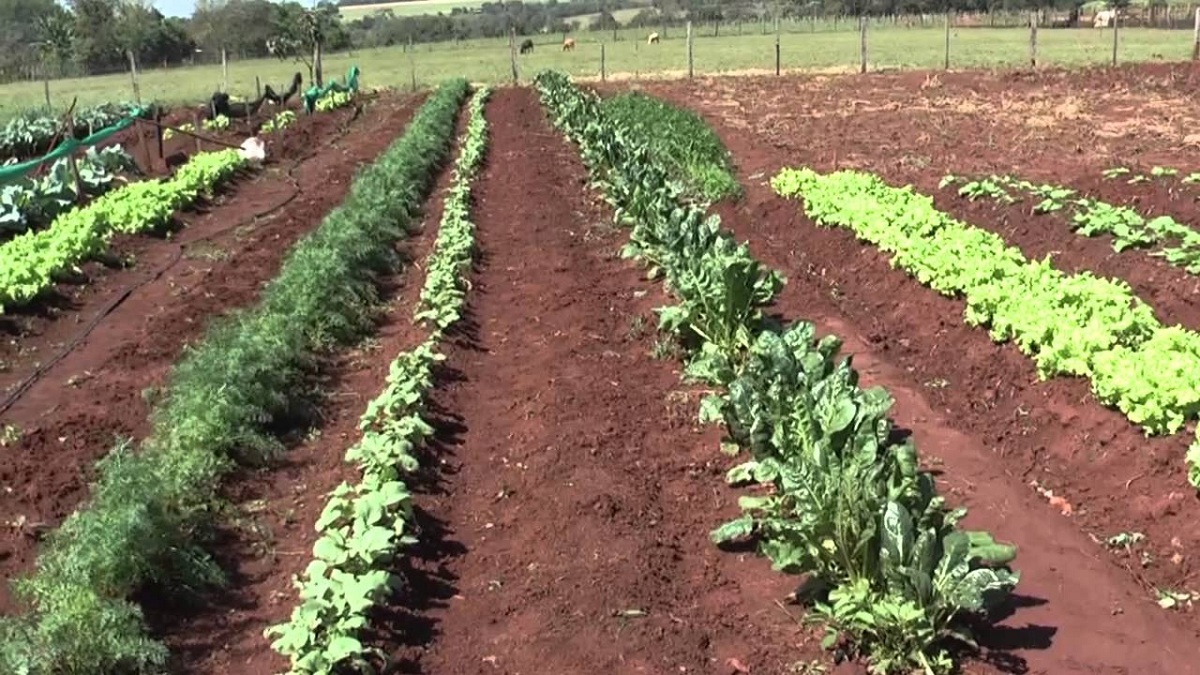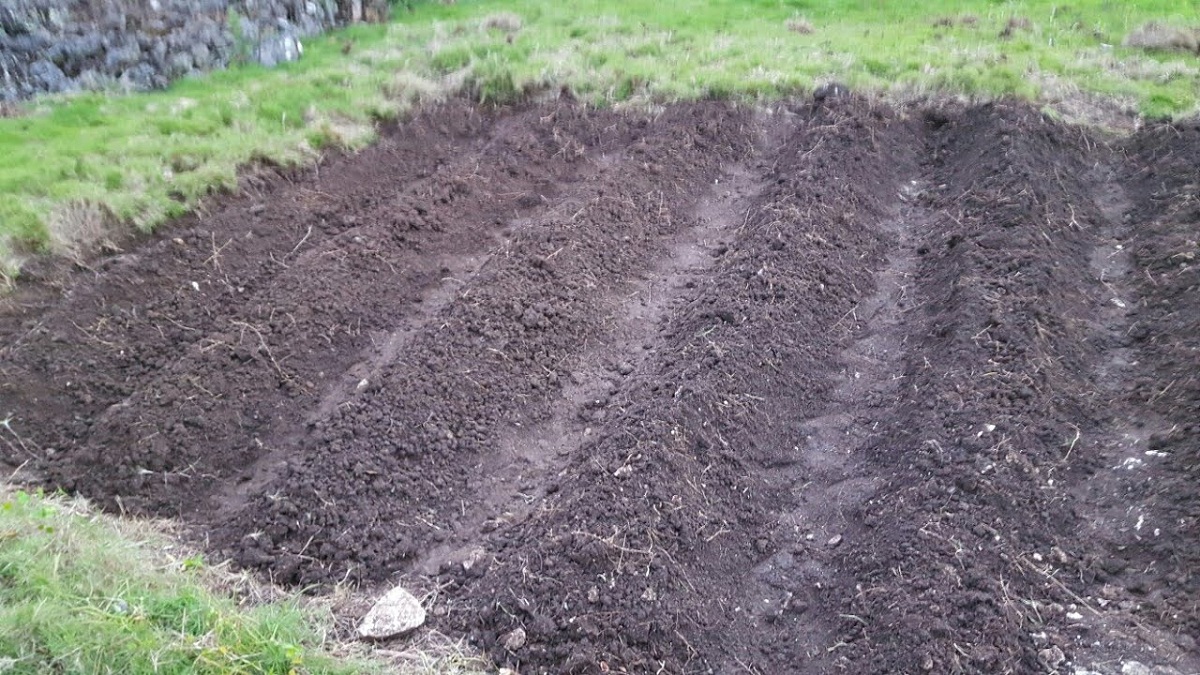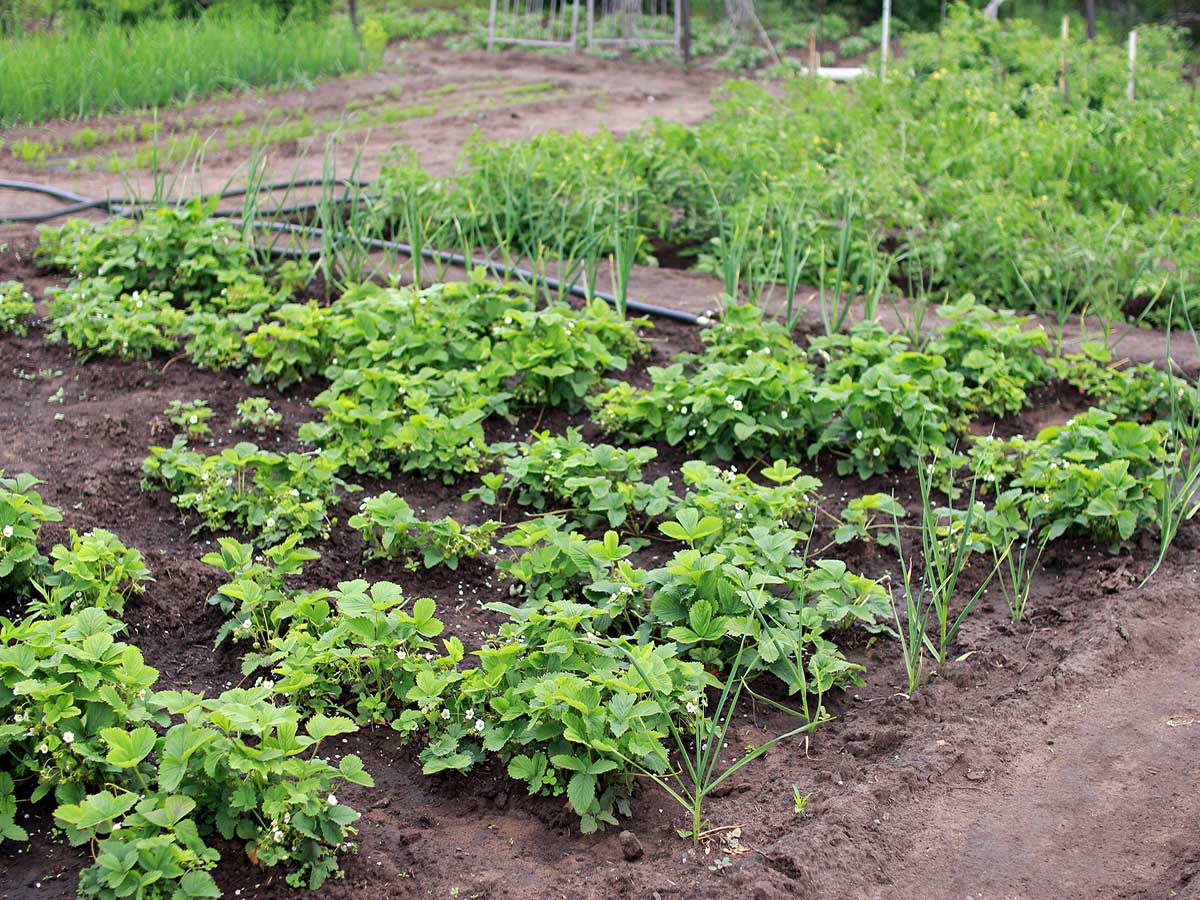
There are many people who can grow their own home garden in the urban setting. However, there are those who have a broader field and want to learn how to make a garden in the country. Keep in mind that it is somewhat more complex since there is a larger size and space. When we sow at home, space is the most limiting thing, but in this case it is the opposite.
In this article we are going to tell you how to make a garden in the field and what are the materials and steps that you should take into account.
How to make a garden in the country
The fundamental thing to learn how to make a garden in the field is its orientation. It must be oriented towards the sun and cannot have nearby structures that cast constant shade on this terrain. It should also be borne in mind that it is necessary on the ground to have a little slope. It is necessary to make grooves parallel to the contour lines to level everything.
If the place where you are going to sow tends to be quite windy, it is advisable to place it in a place where there are no prevailing winds. You can propose a natural barrier of hedges, cypresses, etc. In this way, we can protect you from the wind. These two aspects are important since everything is well planned to favor that our garden has better humidity and temperature. We must also have problems of broken plants or fruits thrown by the action of the wind.
Soil and water
Soil and water are the fundamental elements so that our garden can have good results. The soil should be deep, loose and slightly acidic. It is not recommended that it be stony or very clayey. If the garden area was previously farmland, meadow or forest, the soil is more likely to be suitable for the garden.
If we observe that the color of the earth is very pale when we excavate, even if it is wet, it may have almost no organic matter, we need to provide you with fertilizer, compost, mulch and finally any organic matter completely decomposed.
In any garden it is essential to have a continuous and abundant source of water. On low ground, such as valley bottoms, natural basins, etc., this requirement will not be as necessary. The groundwater level is usually very shallow. In this case, there will be a lot of water in the soil for most of the year.
The irrigation water for the garden must be of high quality, that is, balanced in mineral composition, neither acid nor alkaline, and low in salinity. In spring, rivers or streams and rain are ideal for gardens. In the case of well water, tests should be performed to ensure that does not contain large amount of lime, salt or other elements, when we use this water for continuous irrigation, these elements can become a problem.
If we take into account the abundance of water, it all depends on how our soil is, how much water it can hold, the rain in our area, the shape of the surrounding terrain, if it is high, then the groundwater level will be deep and will not flow from below.
Tools to learn how to garden in the field
An ordinary home garden does not require machinery to function. Some common hand tools, such as Rakes, hoes, forks and shovels of different types and sizes are sufficient. These are essential in your shed, because they will facilitate your work.
For people with certain physical defects, illnesses, or old age, small electric hoes can help with more difficult tasks. We will list the plants that we want to grow to obtain seeds. We can ask for it from acquaintances, or buy it in local stores or online. If we don't have time, another option is to buy plants that are ready to transplant. In a nursery or produce store, there are usually suitable vegetables to plant each season.
It is always a good time to build a garden in the country. Even if we don't start most crops in the right season, that's fine because we can make other preparations, such as demarcate the ground, remove stones, fertilize, plant hedges or aromatic plants, lay paths and fences, install irrigation and provide plants, make piles, cut old trees, etc.
Plowing and fertilizing are best done in the fall or winter, especially if the fertilizer we want to add is not very mature. In spring, we will plant most of the summer crops, although some can already be planted in winter.
Step by step
The best place to look for a garden is a place where there is a long period of direct sunlight during the day. What's more, if we can protect it from prevailing winds through synthetic walls, plants or barriers, so much the better. It would be ideal if the prevailing wind came from the other side where the sun is shining, because the walls would create a particularly warm and peaceful microclimate, and the cooler sensitive vegetables could grow in the less favorable months.
Once we have selected the best area, we will define it to better control the area we cultivate and prevent us from losing or gaining land due to cultivation. We can do this by installing perimeter fences, branch fences, hedges, aromatic plants, flowers, fruit bushes or simply using stone or gravel paths. Fences are best for allowing sunlight nets or nets to cast shadows at least on the sides of the garden.
Once we are clear about which area we are going to use as a vegetable garden, we will get to work to remove everything that prevents or hinders cultivation. Trees, stones, grass, logs, etc. We will leave the surface of the earth clean and bare.
Once we have the bare ground, we will spread a good layer of manure on top and proceed to dig it in depth and undo the clods to loosen the earth and aerate it, trying to bury the manure. If it has not been cultivated for a long time - or if it has been traversed with machinery, vehicles or even on foot - it is possible that the land is very compacted. In these conditions no vegetable could develop properly.
When the time is right We will begin to plant vegetables directly in the garden or seedbed. Most of them are sown in spring, but depending on the characteristics of each place and the different varieties, the dates must be better specified.
Once the garden is up and running, we will test new vegetables and new varieties every year, always looking for the one that best suits our garden and our favorite. There is no point in planting something that will not be eaten. We modify the planting time and labor, and we always write everything down so that we can study later and try to draw conclusions about which things are better than others.
I hope that with this information you can learn more about how to make a garden in the field.


